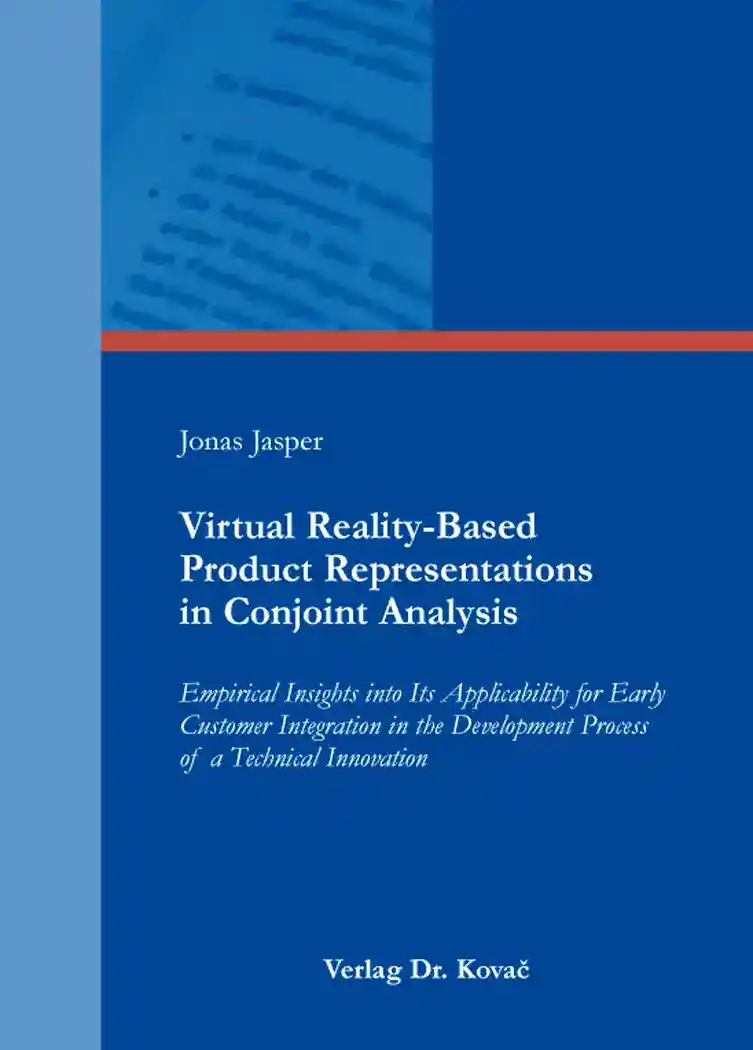Jonas JasperVirtual Reality-Based Product Representations in Conjoint Analysis
Empirical Insights into Its Applicability for Early Customer Integration in the Development Process of a Technical Innovation
- in englischer Sprache -
Schriftenreihe innovative betriebswirtschaftliche Forschung und Praxis, volume 441
Hamburg 2015, 284 pages
ISBN 978-3-8300-8714-4 (print)
ISBN 978-3-339-08714-0 (eBook)
About this book deutschenglish
Innovations have become a main source for companies to sustain a competitive edge and they are essential for survival. Even though companies generate up to 51 % of their income with products and services launched less than three years ago, the failure rate of new product development is still at around 90 %. When aiming to reduce the failure rate, obtaining input from customers by means of preference measurements in the early stages of new product development processes has proven a promising strategy. However, customers often display a substantial amount of uncertainty when having to evaluate highly innovative products as they may not be able to grasp its features and functionalities. Therefore, a number of empirical studies have already compared different presentation forms in a conjoint setting, these studies' aim being to optimize preference measurement results by exposing respondents to more advanced product descriptions in the new product development process.
Based on a quantitative-empirical analysis, this thesis contributes to this research vein by integrating virtual reality-based (VR) product representations within a conjoint setting for the measurement of preferences in the development process of a technically complex innovation. The results of this study point out that VR offers a great deal of potential for early customer integration. At the same time, the empirical analysis emphasizes that lump-sum statements about the usefulness of different presentation forms within a conjoint setting imply a substantial loss of information and can lead to misleading results. Thus, the often-suggested aim of integrating more advanced presentation forms is no guarantee for improved preference measurement results, as such statements are too generalized. Instead, respondents should be pre-selected to ensure that presentation forms match with their cognitive styles. Hence, when integrating customers early on in the new product development process, “better” results are feasible when the “right” customers are chosen. Finally, the study highlights the importance of considering respondents’ product understanding and their subjective interview experience as additional criteria when assessing the usefulness of different presentation forms within a conjoint setting.
Overall, the study complements the already established research vein and addresses six research gaps left by previous studies. The study is rounded off with the provision of a framework, which aims to provide practitioners with clear guidelines on how to select the best presentation forms for specific respondents.
